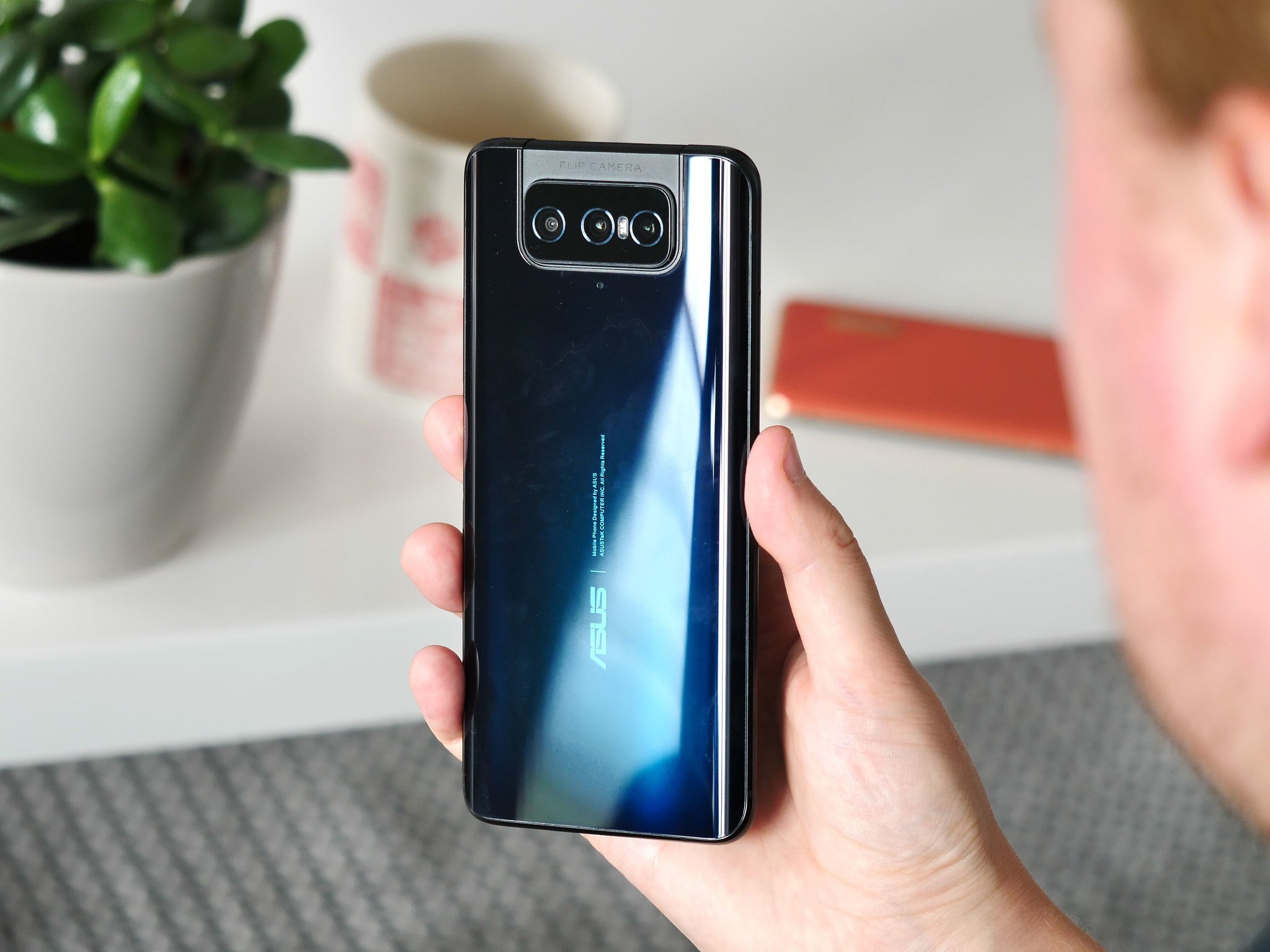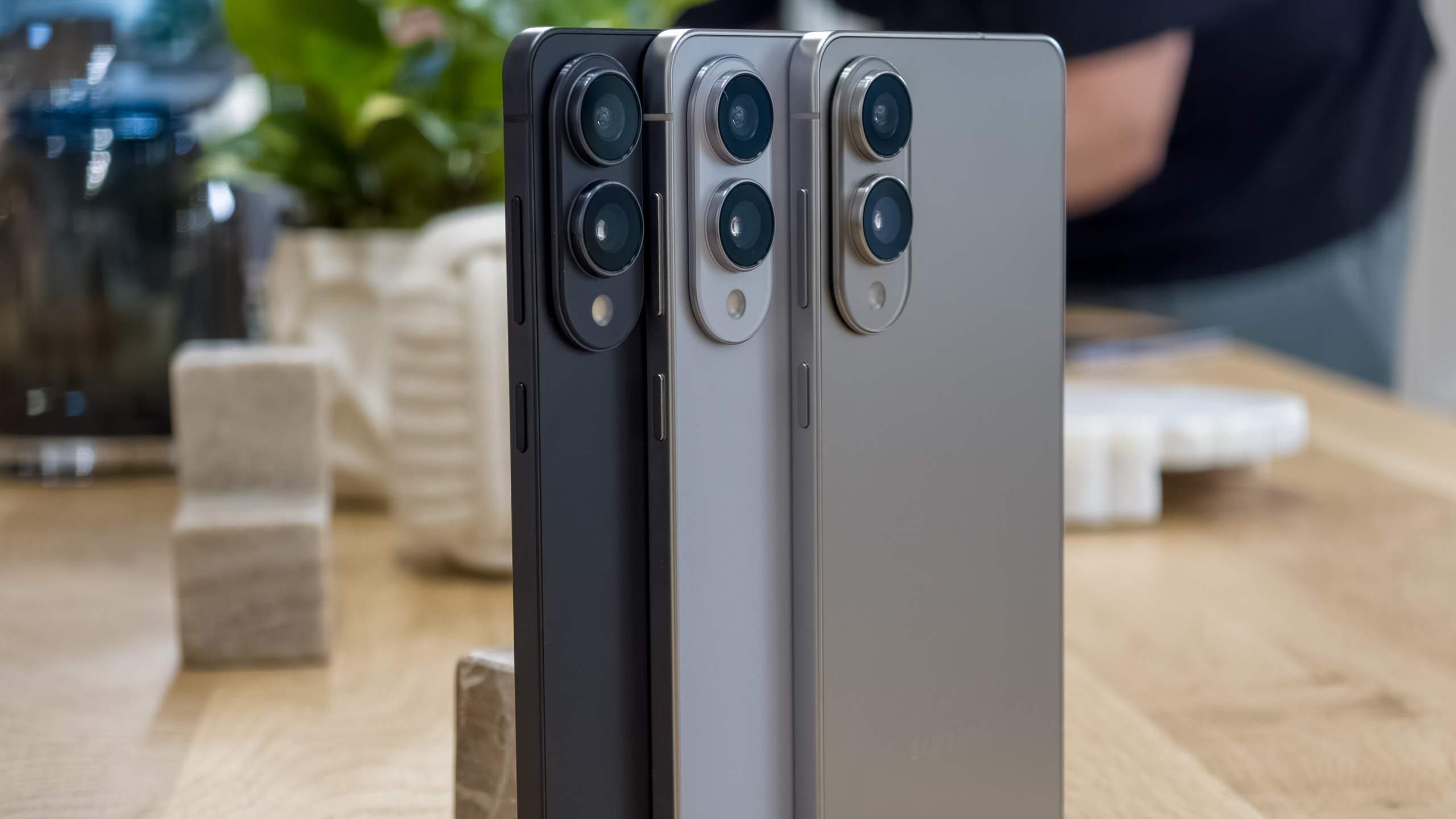Android Central Verdict
Pros
- +
Versatile triple camera setup
- +
The flip camera is game-changing for selfies
- +
Slick 90Hz display with fast performance
- +
Clean Android software with useful additions
- +
Strong battery life
Cons
- -
No water resistance
- -
No wireless charging
- -
Chunky, heavy design
Why you can trust Android Central
If you're cynically-mined like me, it was pretty easy to dismiss last year's ASUS ZenFone 6 as a gimmick. A motorized, flippable camera module might seem over-engineered and unnecessary next to rivals that adopted a more conventional approach to selfies. Plus, the cameras themselves were a step behind some of the best Android phones under $800, missing features like OIS (optical image stabilization) and telephoto zoom.
Its successor, the ZenFone 7 Pro, is just as different as its predecessor was, with the same tentpole feature in the form of rear cameras that rotate to pull double-duty as a selfie shooter. It's the execution of the things that makes the ZenFone unique that's improved so much this time around.
In addition to offering a big battery, clean Android software, and a unique take on smartphone photography, the cameras themselves are dramatically improved. And with these improvements, the central idea of the ZenFone 7 Pro makes a whole lot more sense. Combine all this with a price point that brings some heat to the likes of OnePlus, and you've got one of the most interesting Android phones of the year.
ASUS ZenFone 7 Pro Hardware and design
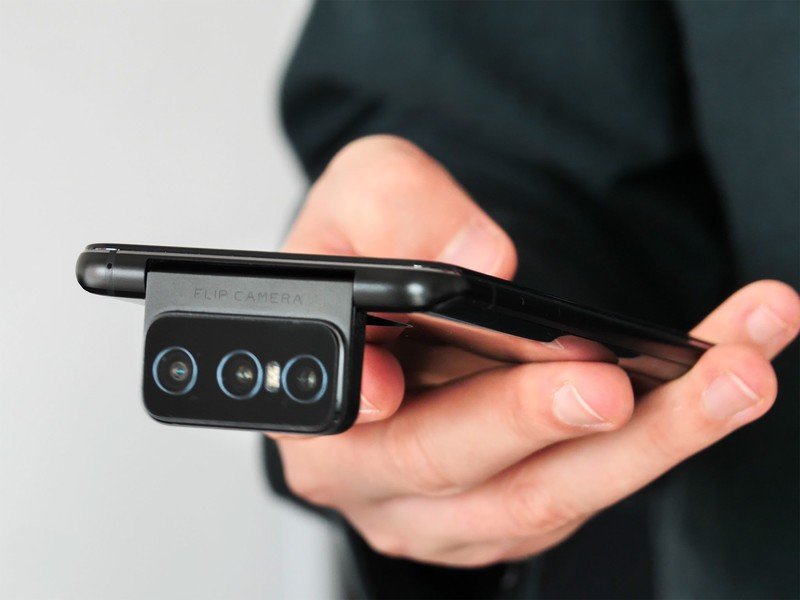
Externally, the ASUS ZenFone 7 Pro is a refinement of last year's ZenFone 6 — the major design characteristics of that phone haven't changed a whole lot. This remains a big, chunky, and fairly heavy phone that makes some rivals feel almost insubstantial. The metal sidewalls, curved back, and chamfered borders channel the design language of the ROG Phone 3 — one of the few handsets that make the ZenFone seem diminutive by comparison.
The phone comes in either black or white, each of which has a slight pearlescent effect to its glossy glass rear, which, in my black model, makes it feel a little less monolithic.
The ZenFone 7 Pro is big and chunky, but necessarily so.
A big reason for the ZenFone's hefty proportions is the flip camera module that you'll usually find tucked into the back of the chassis. When docked, it's able to masquerade as a regular triple-camera module. But when it springs to life, the motor flips all three around to point at your face. Ideal for selfies, but a little goofy looking if you're recording an Instagram story or sitting in on a Zoom call. (I'll take occasional goofiness over a hole-punch or notch, for what it's worth.)
In fact, my biggest pet peeve with the flip camera is how much dust and lint it tends to attract — an inevitable consequence of the way it's built. The dust it attracts never got in the way of photos but did end up looking a little unsightly when first removed from a pocket.
Get the latest news from Android Central, your trusted companion in the world of Android

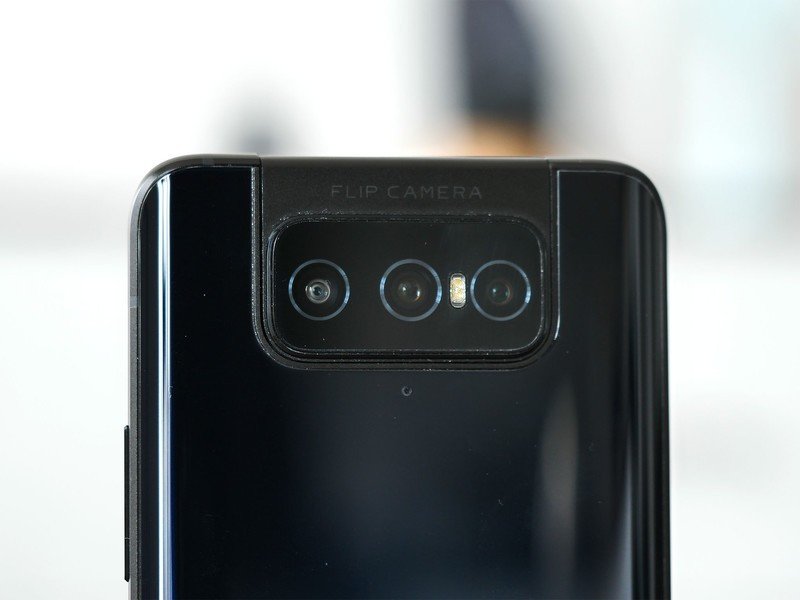
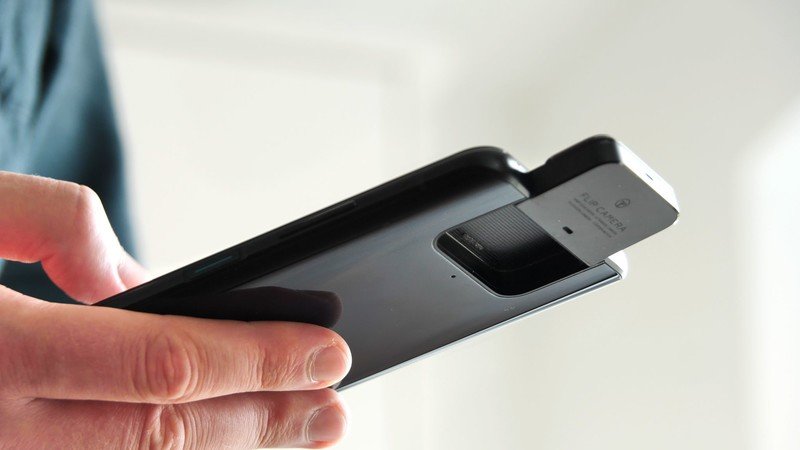

Around the front, you'll immediately notice one of the major benefits of the flip camera, even when you're not taking photos. The 6.67-inch 90Hz Full HD+ display is unblemished by neither hole-punch nor notch, with the symmetry of the display broken only by a slight "chin" area down below. Like the ZenFone 6, the new model packs an impressive 92% screen-to-body ratio, though with a larger display diagonal.
The screen itself is also much improved compared to last year. For starters, it's an AMOLED panel, which enables features like Ambient Display, and reduces power consumption with darker colors. Daylight visibility is also much improved, and the bump up to a 90Hz refresh rate is a welcome upgrade. It's not as fast (on paper) as the many 120Hz flagships out there, but in day-to-day use, you're not going to notice the difference.
I'm not sure if I'd rank it as highly as the Oppo Find X2 Pro or Galaxy Note 20 Ultra, but I've had no complaints in day-to-day use — and after all, this isn't a €1000 phone.
Although you might expect one in a phone at this price point, there's no in-screen fingerprint sensor in the new ZenFone. Instead, the capacitive fingerprint scanner is now built into the power button on the side of the device. That was a source of concern for me at first, but I've found it works far more reliably than the frustrating side-mounted sensor of the Sony Xperia 1 II. Although the sensor is slim, neither speed nor accuracy have been a problem.
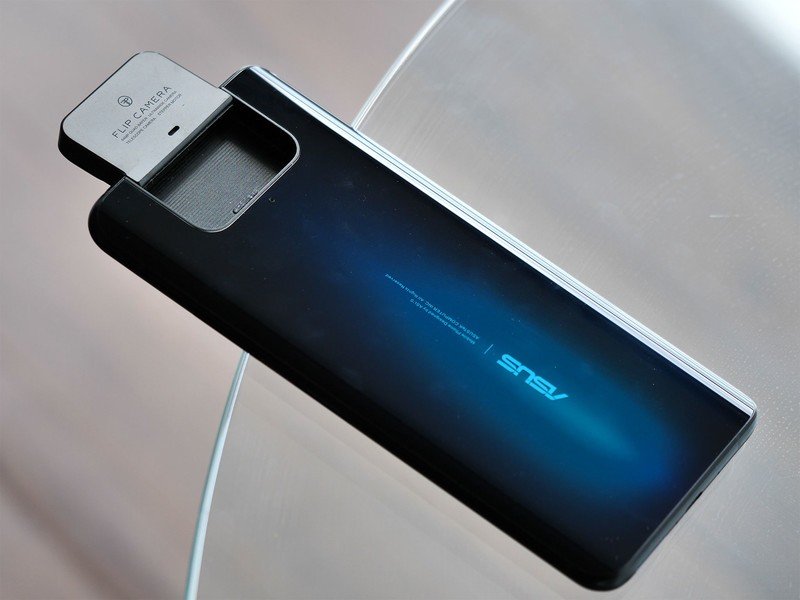
ASUS ZenFone 7 Pro Specs
| Category | Features |
|---|---|
| Display | 6.67-inch Full HD+ AMOLED all-screen display, 92% screen-to-body ratio, 20:9 aspect ratio, 90Hz refresh rate, 1ms response time, 200Hz touch sampling rate, 110% DCI-P3 color space, Delta E<1 color accuracy |
| CPU | Qualcomm Snapdragon 865+ 5G Mobile Platform |
| GPU | Qualcomm Adreno 650 |
| RAM/ROM | LPDDR5 8GB RAM, UFS 3.1 256GB |
| Wide Camera | 64MP Sony IMX686 flagship sensor, Quad Bayer Technology, F1.8, 0.8/1.6-micron effective pixel size, 1/1.73" 2x1 OCL PDAF, OIS, Dual LED Flash |
| Ultrawide Camera | 12MP Sony IMX363 flagship sensor, 113-degree ultrawide F2.2 DualPDAF front, and rear real-time distortion correction. |
| Telephoto Camera | 3X optical zoom, up to 12X total zoom, OIS, supports seamless transitions between cameras while recording |
| Video recording | Up to 8K@30fps with EIS for main camera Up to 4K@60fps for secondary camera |
| Battery | 5,000mAh, Quick Charge 4.0 |
| Wireless | WiFi 6, Bluetooth 5.1, Qualcomm aptX Adaptive, Wi-Fi Direct, NFC |
| SIM/SD slots | Triple slots, 5G+4G or 4G dual-SIM / dual-standby support Slot 1: 5G/4G/3G/2G Nano SIM Card Slot 2: 5G/4G/3G/2G Nano SIM Card Slot 3: Supports up to 2TB microSD card |
| OS | Android 10 |
| NFC | Available |
| Audio | Dual speakers with dual smart amplifiers NXP TFA9874 smart amplifier Triple microphones with ASUS noise reduction technology |
| Color | Aurora Black, Pastel White |
| Dimensions | 165 x 77.28 x 9.9 mm |
| Weight | 230g |
On the inside, it's standard 2020 Android flagship fare, with a Snapdragon 865+ processor paired with 8GB of RAM and 256GB of storage. That storage is expandable via microSD, and thanks to ASUS's use of a dual SIM + SD slot, you can use a microSD even when two SIMs are also inserted. Being a Snapdragon 865+ device, 5G support is included and works in dual-SIM mode (though only one SIM can have a 5G connection at any one time — you're limited to 4G on the secondary slot.)
What's more, as you'd expect from such a generously proportioned handset, there's an appropriately capacious 5,000mAh battery lurking within, backed up by 30W wired charging. More on that later.
A generous loadout of specs, capped off by a capacious battery.
With that said, let's move onto a couple of significant hardware compromises: First, there no 3.5mm headphone jack — not exactly uncommon but noteworthy. And, because of the unique flip camera, the ZenFone 7 Pro isn't water-resistant and has no IP rating. And there's no gasket around the SIM tray either, so you'll want to be careful around sinks, pools, and other sources of water with this phone.
That's not to say the ZenFone 7 Pro is fragile, though. Its flip camera has a new and redesigned motor, which in addition to being smoother, is rated at up to 200,000 rotations, or more than 100 flips per day for five and a half years. (That's double the 100,000 rotation rating of the ZenFone 6.)
ASUS ZenFone 7 Pro Software and battery life

ASUS's ZenUI underwent a major overhaul last year, pivoting hard towards stock Android and away from the general goofiness and iOS clonery of previous versions. That stock look and feel hasn't gone anywhere in version 7, but ASUS has added more helpful tweaks to its software loadout with this latest release. The quick settings panel, for instance, is easier to use with one hand, and extra functionality has been added to the volume menu.
Plus, the power key can now be programmed to launch apps or perform other functions with a long press or double-tap; I've had them set to launch Google Pay and the Camera, respectively. (If you set a shortcut for long press, you can access the power menu through a shortcut in the notification shade.)
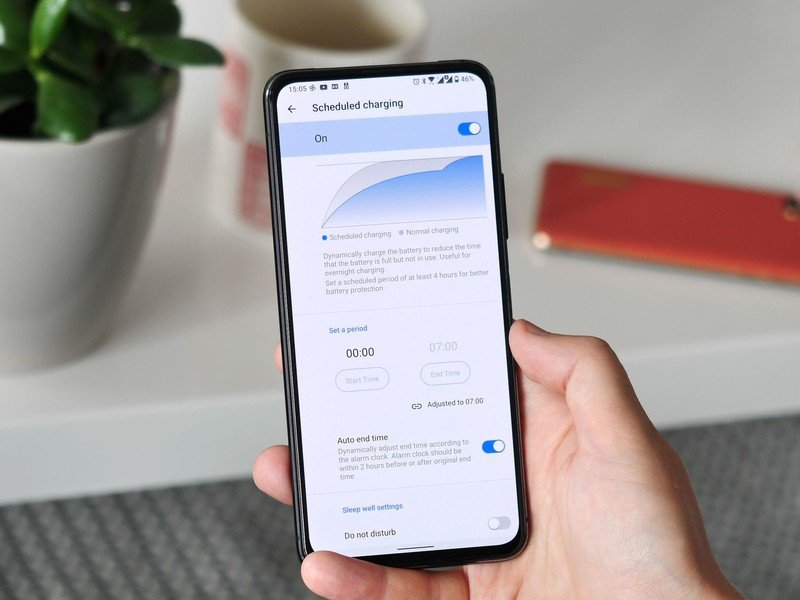
Meanwhile, the move to an AMOLED display brings with it an Always On Display feature, which works just the same as stock Android, with incoming notifications flashing up. Google's Android Messages app is the bundled text messenger, and the phone also supports the Google Phone app if downloaded from Google Play — useful if you want Google's caller ID and spam detection features.
Mostly, ASUS's software just gets out of the way, feels fast, looks pleasant, and is a delight to use as a result.
The only software caveat is that this phone has the misfortune of launching on Android 10 just days before the expected Android 11 stable release. ASUS isn't committing to any firm date for stable Android 11, though it's currently starting a beta program for ZenFone 6 owners.
All the battery health software features we first saw on the ROG Phone 3 are present, including the ability to schedule slower charging times overnight to improve long-term battery health. Better charging habits can help dramatically improve your battery's longevity over time, so it's great to see software features designed to nudge us in the right direction.
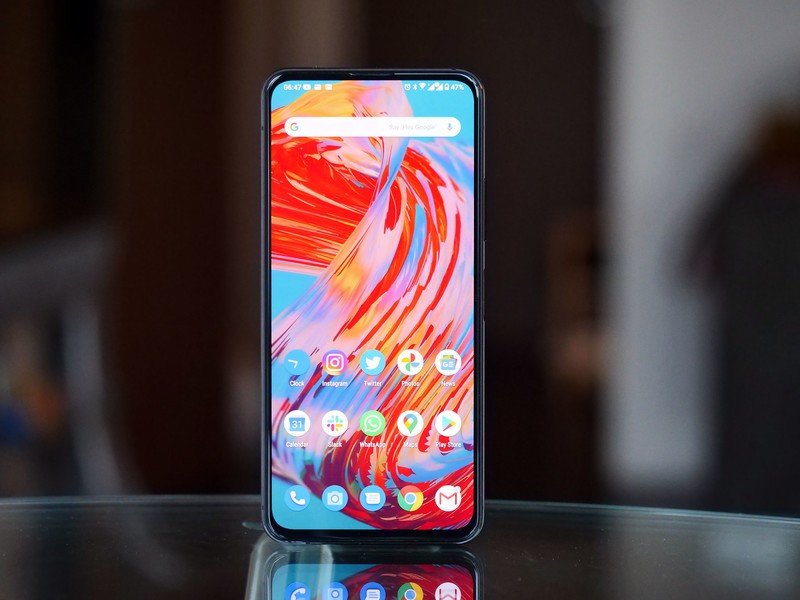
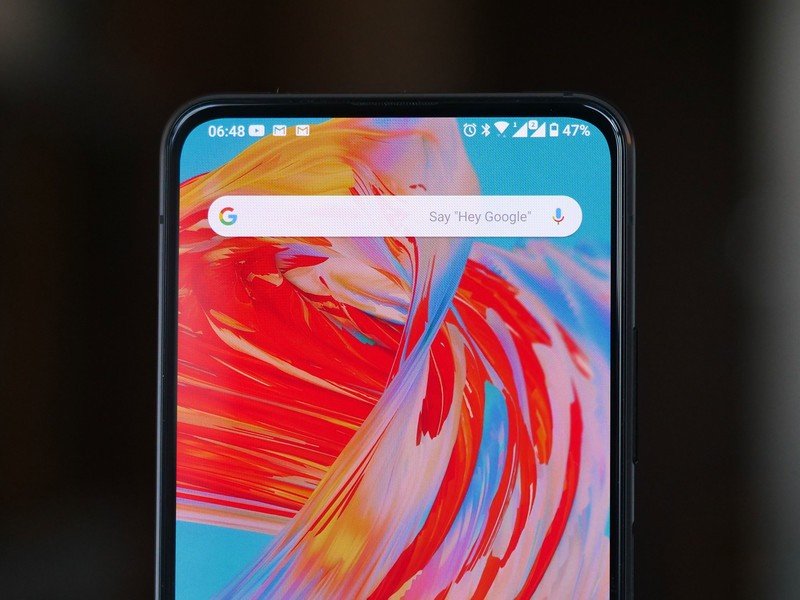

A 5,000mAh battery delivers expectedly reliable all-day longevity.
Fresh out of the box, I've been pretty impressed with the ZenFone's battery life. On the pre-release firmware I've been using, I've been easily getting through a full day with up to six hours of screen-on time if I push the phone hard. Most days, I'd have between 50 and 25 percent left in the tank at bedtime, and the only way I was able to kill it off in less than a day was with constant photo and video and LTE data usage. On one particularly photo-heavy day, when I ended up shooting more than 300 pics, I was reaching for the charging cable by around 8 pm.
A note on battery life
Around 24 hours before this review was due to go live, ASUS dropped a software update designed to address a bug with standby battery life. My standby time has been perfectly fine even on the old firmware, but we'll update this review if we notice significantly improved longevity on the new firmware.
ASUS ZenFone 7 Pro Cameras
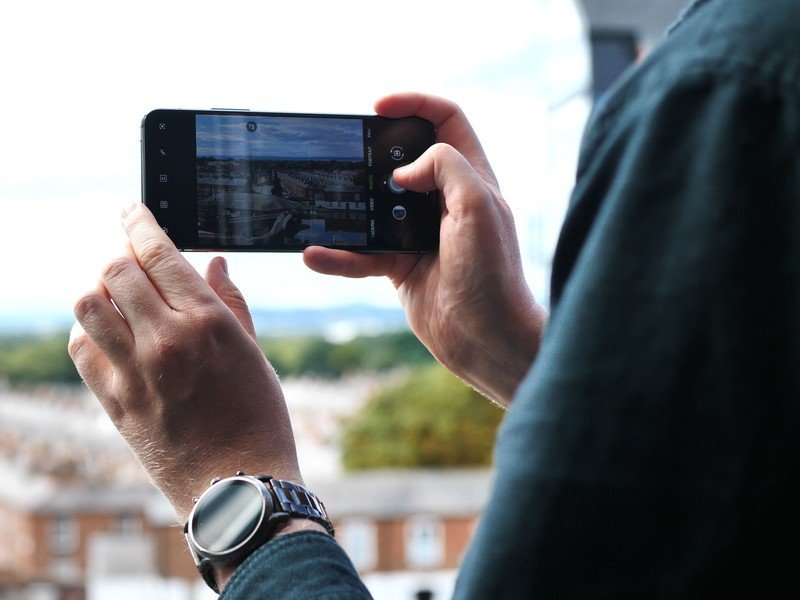
Before we get stuck into the nitty-gritty camera hardware details, let's catch up on the central premise of the ZenFone 7 Pro. You've got three cameras on the back and zero on the front — because when you need a front-facing camera, the three main cameras just flip around to point at your face.
That's the genius of the flip camera: There's no need for an unsightly notch or cutout to fit in extra selfie cameras. And as a bonus, you get better quality selfies than just about any other phone because you're using the same high-quality cameras you use for regular photography. Selfie cameras typically don't perform anywhere near as well as your phone's rear cameras, especially in darker or more challenging lighting conditions.
With upgraded sensors and lenses, the ZenFone's flip camera makes its predecessor look like amateur hour.
This year ASUS has made some pretty considerable upgrades to its Flip Camera. There's a 3X telephoto, notably missing from the ZenFone 6, with optical stabilization. OIS has also been added to the main camera, which now uses Sony's beefy new 64-megapixel IMX686 sensor. And the ultrawide gets an upgrade to the 12-megapixel IMX363, a.k.a. the main sensor from the Google Pixel 4, though without OIS.
The new, large sensor performs excellently across just the board, whether in low light using the ASUS Night Mode or in high-contrast situations with a lot of backlighting. This is every bit a flagship-tier main camera — extremely versatile, with that 64MP sensor taking 16-megapixel photos by default, with an equivalent pixel size of 1.6 microns. That means, compared to something like the OnePlus 8 Pro or Galaxy S20, you're trading a little extra low-light performance for a little extra resolution. The sensor's also large enough that in close-ups, you'll get a nice bit of natural bokeh.
Having a sensor like this, backed up by flagship-level photo processing, is a revelation for front-facing photography. Low-light performance is the obvious benefit of taking selfies with your main sensor. Optical stabilization is still rare in selfie cameras, after all. But also things like autofocus — no need to worry about awkward fixed-focus selfie cameras that make you look just a little bit out of focus.
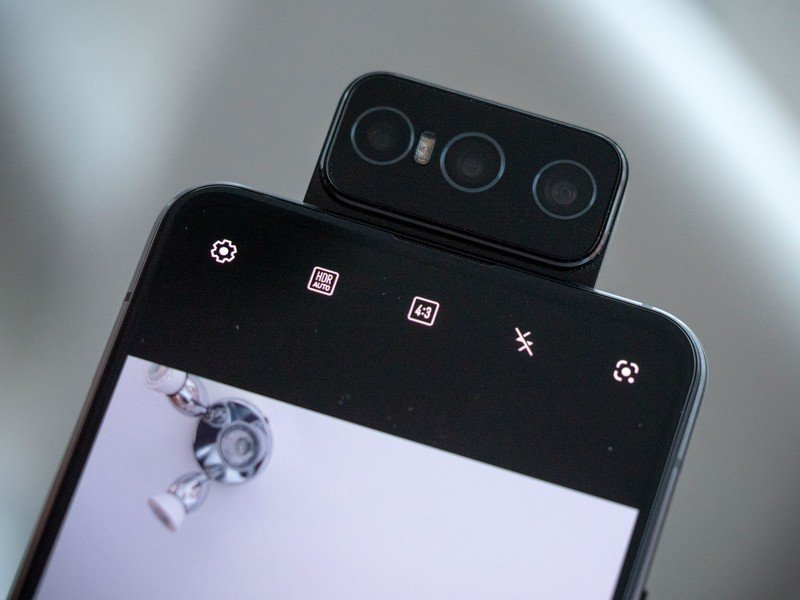

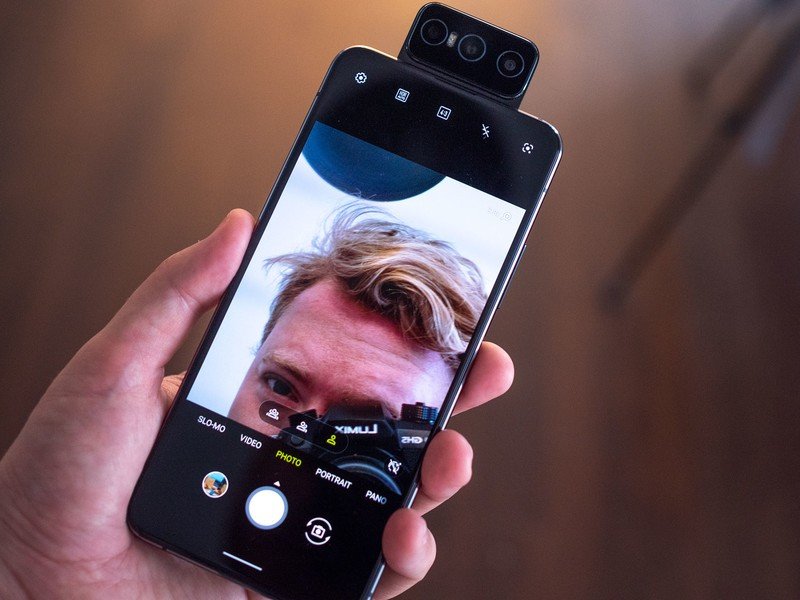
The nature of the Flip Camera also means you can take advantage of ASUS's improved video capabilities, whether you're shooting from the front, rear, or anywhere in between. The main sensor supports up to 8K recording with EIS 30fps, while the others cap out at 4K60.
The ZenFone 7 Pro has probably the best and certainly most versatile selfie setup of any smartphone.
The ultrawide camera not only gives you more space for scenery or friends but does so without compromising image quality. Once again, it delivers luxuries like autofocus, which are rare even in primary selfie cameras.
The ultrawide also performs well across the board, with minimal distortion around the edge of the frame, and a 113-degree field of view that's great at capturing a wider view of what's in front of you. The lack of OIS means low-light performance is weaker, but the relatively large 1.4-micron pixels and ASUS's software processing go a way towards compensating for this.
I wasn't expecting much from the 8MP 3X telephoto, but I came away pleasantly surprised. Obviously, this is no periscope telephoto camera, so diminishing returns are going to kick in after around 5X. But you can still make out plenty of fine detail on these wine bottles in this shot taken at around 6-7X.

























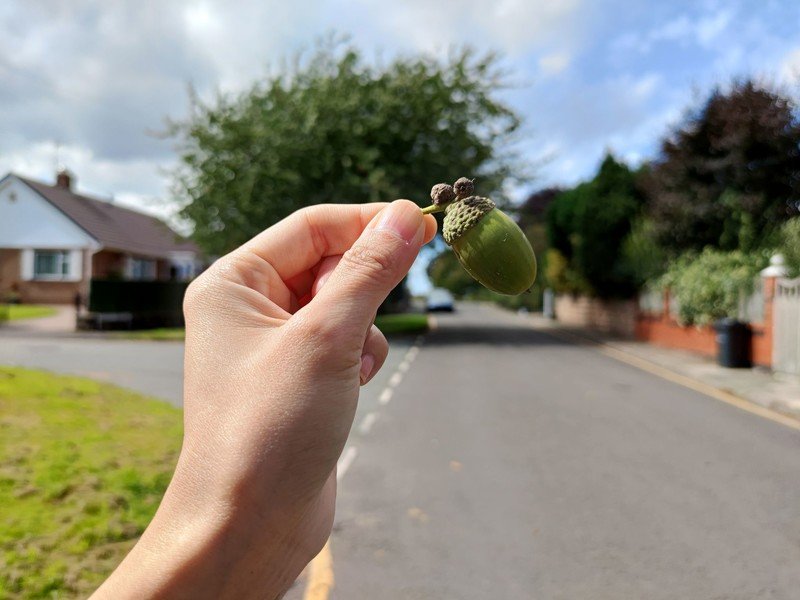

By the way, yes, you can absolutely use the telephoto for selfies too, but I'm not sure why you'd want to unless you really like your face filling the entire frame.
The flip camera isn't just useful for front or rear-facing shots. You can stop the camera at any angle in between the two, and even save three presets within the camera app for quick access. So if you want to quickly switch to a 90-degree angle to frame up pets without spooking them, that's really easy to do and extremely super useful if you want a low perspective of a scene without getting down on your hands and knees.
What's more, because of ASUS's floating control panel feature, you can also use this in third-party camera apps and social network apps too.
All of which makes for a fun and versatile camera setup that's going to be especially appealing to anyone who takes a lot of selfies.
ASUS ZenFone 7 Pro: The competition

With an enthusiast focus and a €899 price in Europe, the ZenFone 7 Pro's major rivals is the OnePlus 8 Pro. OnePlus's flagship has a similar-sized screen but with smaller bezels, a curved panel, a higher resolution, and a 120Hz refresh rate. OnePlus is also famed for its lightweight Android software, though that's about to change soon with a radical redesign in OxygenOS 11. While the 8 Pro's camera can outperform ASUS in low light, the front-facing shooter can't match the performance of the ZenFone's flip camera. On the other hand, OnePlus's phone might be a safer bet for buyers wanting features like wireless charging and water resistance.
Two safer options: the OnePlus 8 Pro or Galaxy S20+
Looking further afield, Samsung's Galaxy S20+ can also be found discounted to around this price and shares a lot in common with the OnePlus 8 Pro. Samsung has traditionally been a safer bet, and with the S20+, you'll get a faster 120Hz display and a more attractive, lightweight chassis and table-stakes features like wireless charging and IP68 water and dust resistance. Camera performance should be close between the two models, but obviously, you also can't flip around Samsung's cameras and point them at your face. Plus, the Galaxy S20+ has a smaller battery and weaker battery life, especially in territories where the phone uses Samsung's own Exynos processor.
Both can be seen as safer options than the ZenFone 7 Pro, but neither can offer its unique camera setup nor match its battery life.
ASUS ZenFone 7 Pro Should you buy it?
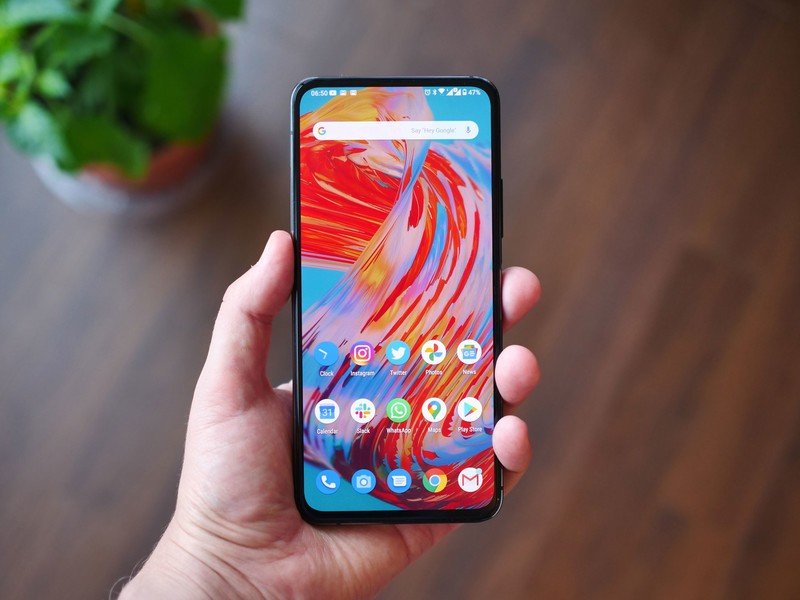
Who it's for
- Big selfie-takers (and anyone who appreciates great photos in general)
- Someone who needs long battery life
- Fans of fast, clean stock Android software
Who it's not for
- Anyone who needs water resistance
- Anyone who finds big phones unwieldy
The ZenFone 7 Pro has far fewer compromises than its predecessor, making it easier to enjoy the things that make it stand out: The borderless display, great battery life, and versatile photo experience that the flip camera enables. But there are a few bumps in the road that may give pause to would-be buyers.
4 out of 5
First, the phone is big, slippery, and heavy, and that's going to be a deal-breaker for some people. And weighing in at 230 grams, it's not far from true behemoth phones like the Galaxy S20 Ultra. Likewise, the nature of the flip camera's hardware means water resistance is out of reach — for now. If your job means you're frequently around water, or you just don't want to chance an expensive smartphone without the security of an IP rating, this could be a hard sell.
Fun selfies and creative camera tricks will cost you wireless charging and water resistance.
Plus, if you've already invested in a lot of wireless chargers, they're not going to be of much use here.
But for me personally, those are trade-offs I can live with in exchange for ASUS's great software, the ZenFone's solid battery life, and the versatility and quality of the new flip camera.
Overall, the ASUS ZenFone 7 Pro is a substantial upgrade to the ZenFone 6. It isn't dramatically different — and some necessary hardware compromises remain — but the execution of all the ideas that made the ZenFone 6 unique has been much improved. The upgrades are mainly incremental but targeted in the areas that make the most sense — particularly the cameras, which are the star attraction of this phone. Other improvements like the 90Hz display, 5G connectivity, and faster charging, make the ZenFone more competitive in the very crowded Android flagship space.
And with a Western price point that's breathing right down OnePlus's neck, the ZenFone 7 Pro is 100 percent worth your consideration and your cash — especially if you value great battery life and the best selfie-taking experience around.

Alex was with Android Central for over a decade, producing written and video content for the site, and served as global Executive Editor from 2016 to 2022.
